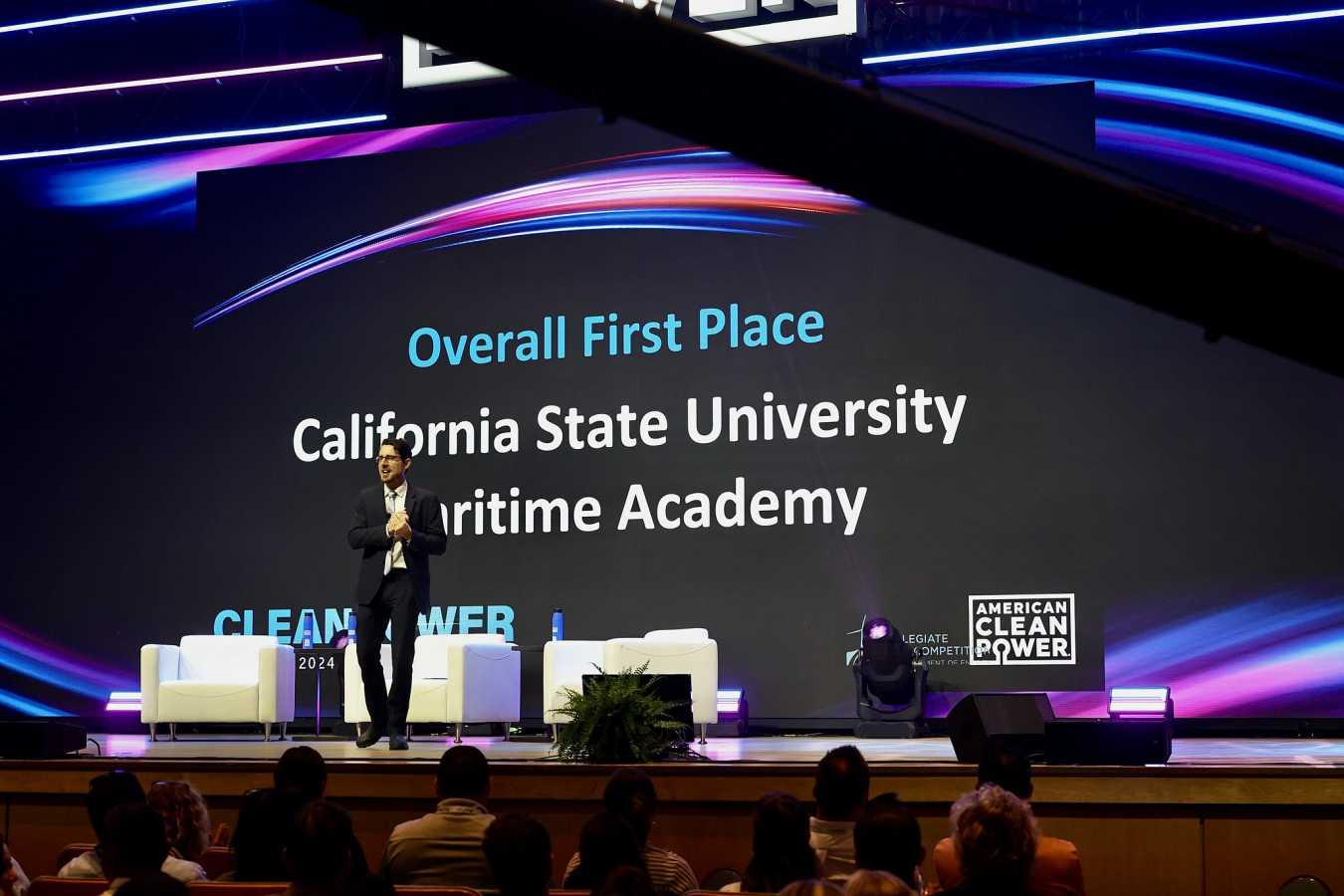Catch up with Wind Energy Technologies Office Director Eric Lantz as he reflects on office milestones over the past seven months.
Wind Energy Technologies Office
May 23, 2024
In the seven months since I took on the role of director, I have been learning each day about the true depth and breadth of the research supported by the U.S. Department of Energy's Wind Energy Technologies Office (WETO). Needless to say, I have been impressed by just how many projects there are across the research spectrum—and across the country—to advance wind energy for the benefit of the nation.
WETO recently announced several new funding opportunities. The Offshore Wind National and Regional Research and Development Funding Opportunity Announcement (FOA) will direct $48 million toward projects that address several major areas of need for offshore wind. The Research to Improve Aerodynamic Performance of Offshore Wind Turbines FOA will funnel $5.1 million toward advancing modeling and analysis for next-generation offshore wind turbine blades.
WETO also announced that six state-based projects were awarded $10 million through the Renewable Energy Siting through Technical Engagement and Planning (R-STEP) program; applications are now being accepted for the $12 million Round Two of R-STEP. Finally, WETO announced a request for information seeking input on issues related to U.S. domestic wind turbine blade manufacturing, with the goal of identifying where to direct future funding related to increased production capacity and domestic blade manufacturing.
WETO also funded research that spurred three major publications. The Atlantic Offshore Wind Transmission Study is a thorough analysis of options for bringing offshore wind energy onshore to communities along the Atlantic Coast; the study also informed an action plan that outlines immediate actions needed to connect the first generation of Atlantic offshore wind power projects to the electric grid. The National Wind Workforce Assessment will help the U.S. wind industry identify ways to ensure it has the necessary workforce to meet its deployment goals. And the Pathways to Commercial Liftoff: Offshore Wind Deployment report communicates how the offshore wind sector is currently poised for liftoff, enabled by continued efforts to adapt to recent market challenges.
This letter is part of the
Spring 2024 R&D Newsletter
In This Issue
Current Research & Development
Letter from the Director
Some major milestones were also met in the three prizes and competitions funded by WETO. The Collegiate Wind Competition just announced that California State University Maritime Academy took home top honors in the 2024 competition for showcasing innovation in wind energy; applications are now open for the 2025 competition. The FLoating Offshore Wind ReadINess (FLOWIN) Prize just announced its five finalists, who each won $450,000 for making progress toward plans for mass production of their floating offshore wind platforms. And the Wind Turbine Materials Recycling Prize announced its 20 Phase 1 winners, who won $75,000 each for their innovative ideas to enhance wind material recycling technologies and processes.
Meanwhile, our vital research and development in both offshore and land-based wind energy is still going strong. In this issue of the newsletter you’ll learn more about:
- How researchers in the Wildlife and Offshore Wind project are observing and analyzing the behavior of whales, birds, bats, and sea turtles around offshore wind energy sites off the East Coast that are under construction.
- How a Berkley Lab analysis finds that despite an expected future reduction in the number of turbines per power plant, the total annual estimated energy output of wind plants will increase thanks to larger, more powerful turbines.
- How the Wind Technology Testing Center in Boston has improved testing capabilities so that it can now receive and evaluate offshore wind blades up to 120 meters long, a step that will help expedite the deployment of offshore wind power.
- How the National Renewable Energy Laboratory’s Grid Impedance Scan Tool is making it possible to identify and avert potentially disruptive electrical oscillations on the electric grid—which will be essential to integrating more clean resources like wind energy into the grid while maintaining its reliability.
- The Wind Resource Database, which offers a collection of modeled wind resource estimates. The database will be especially helpful for developers deciding where to erect new wind energy sites.
- A new Idaho National Laboratory report, the Attack Surface of Wind Energy Technologies in the United States, which takes the first comprehensive look at cyberattack risks that could jeopardize U.S. wind energy systems and reviews real-world events that have affected wind energy systems and organizations around the world.
- Clean Energy Champion Josh Paquette, a researcher at Sandia National Laboratories focused on wind turbine blade design and reliability who is anticipating the needs of the wind industry before they happen.
Finally, I’d like to highlight one other major accomplishment: Our team worked with the Internal Revenue Service to ensure strong provisions for wind energy developers and manufacturers under the Inflation Reduction Act. Read WETO’s Advancing the Growth of the U.S. Wind Industry: Federal Incentives, Funding, and Partnership Opportunities fact sheet to learn about all of the bonuses, credits, and other provisions that will play a major role in incentivizing new offshore wind development.
We look forward to another productive summer!
Sincerely,
Eric Lantz
Director, Wind Energy Technologies Office

